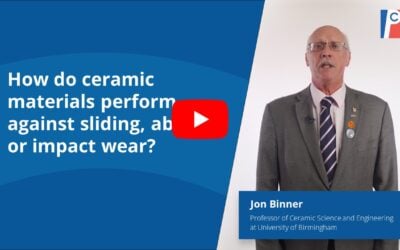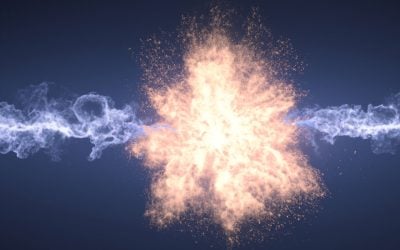The machining of technical ceramics in an unfired state is called, quite simply, ‘green machining’ and in the case of some of the hardest ceramics, it is a far more economical route to take than post machining after firing.
In a typical process, a technical ceramic in powder form is mixed with an organic binder and then pressed at very high pressure into a pre-engineered mold to form a raw shape. At this stage, the ceramic is usually stable enough to machine as closely as possible to its finished state. The right choice of binder is, of course, very important and will have a major influence on machining at this green stage including the cutting suitability and mechanical resistance.
Careful calculation and allowance for shrinkage during firing must also be taken into consideration but this is often a much easier route to take than machining after firing when the ceramic becomes so hard and dense that only a minimum amount of grinding and shaping is possible.
Depending on the type of ceramic being manufactured, most types of common machining processes can be employed to turn the pressed ceramic into something a little closer to the end product. Precision Ceramics has extensive in-house machining facilities including 4th and 5th axis machining centres to cater for this. But whilst cutting, milling and grinding may be easy operations to carry out at the green stage, more precise drilling and hard grinding may have to wait until firing is complete or, in some applications, at the biscuit stage, when the ceramic is not fully sintered but significantly harder than at the green stage.
Right: Green machining of technical ceramics is an everyday process at Precision Ceramics.
Sintering
In order for a technical ceramic to become hard and dense, it must be sintered or fired to high temperatures for prolonged periods of time in tightly controlled gas or electric kilns. Typical firing temperatures for alumina and zirconia range from 1,500°C to 1,800°C. Typical firing cycles vary between 12 and 24 hours depending upon the kiln type and product.
In general ceramics shrink approximately 20% during the sintering process. Non-uniform shrinkage as a result of standard forming and machining processes can cause the ceramic to deform but the in-house knowledge and experience we have gained over many years will always ensure that such problems are kept to an absolute minimum and that the geometric accuracy of the component is maintained as closely as possible.
Post Firing
Once the sintering process is complete and the ceramic has cooled to a workable temperature, several different finishing processes can be employed to achieve the tight tolerances and surface finishes often demanded of bespoke technical ceramic components.
Of these, precision grinding is the most common but through the careful control of the firing process, this is generally kept to minimum due to the extreme hardness of the now fully sintered ceramic. At this stage is it also usually possible to drill and tap the ceramic component if required.
Most fired aluminas can also become dirty through handling, machining and inspection procedures but can be easily cleaned using a variety of effective techniques.
Biscuit Machining
Approximately half way through the sintering process, the green ceramic reaches a ‘biscuit’ state where almost all of the organic binder used in the original mix and pressing will have burnt off leaving an almost pure but not fully sintered material. At this stage, the ceramic is much harder than it was when ‘green’ and some of the machining operations that were not possible at the initial green stage may now be practical – tapping and threading for instance.
Of course, there will still be shrinkage in the final sintering process but again, this can be calculated and controlled to get the best end results.
Interested in finding out more and if any of our materials are the right fit for your application? Please don’t hesitate to get in touch.
Related topics:

Ceramics Machining & Grinding
Precision Ceramics has extensive experience with high-tolerance advanced ceramic milling, grinding and polishing of unfired (‘green’) and fired ceramics.

Advanced Ceramic Manufacturing
Precision Ceramics is internationally renowned as as one of the world’s authorities in custom ceramic component engineering & design support.





